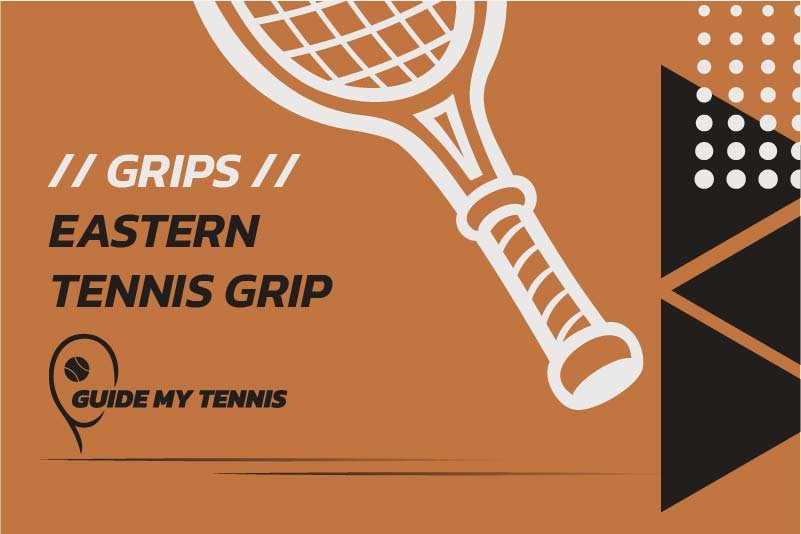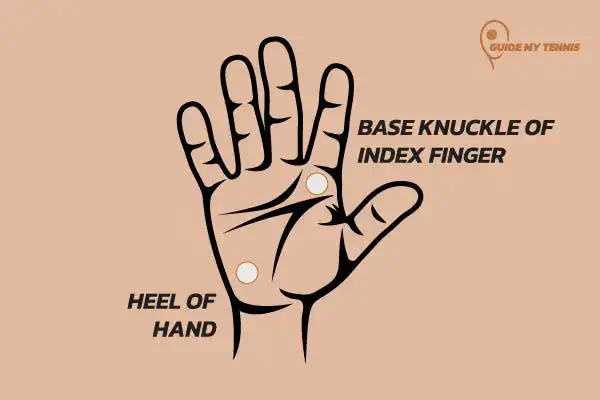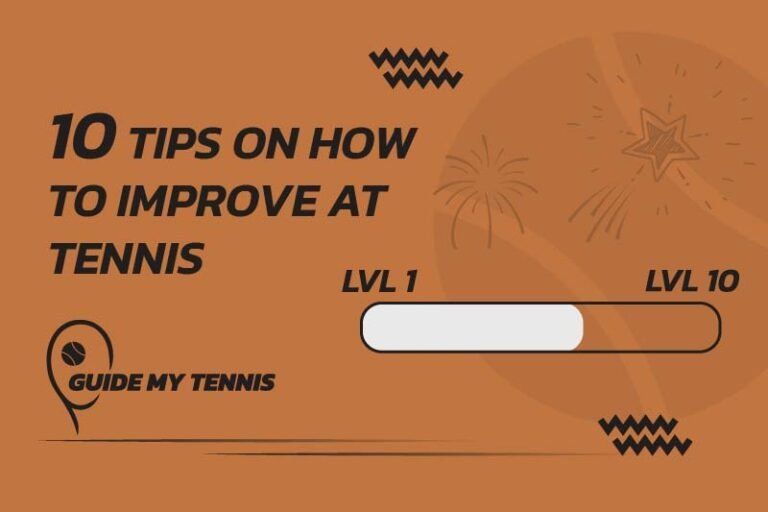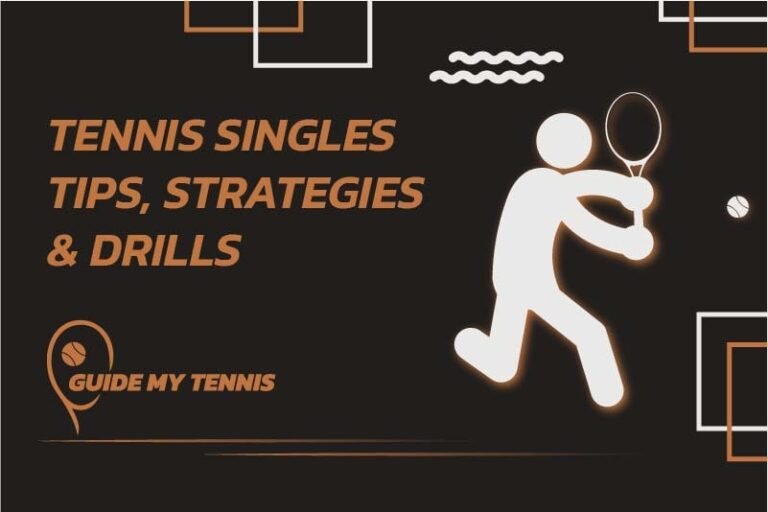The Eastern Grip in Tennis – Tennis Grips Explained
The Eastern Grip is generally the 2nd most common grip in tennis, it’s very similar to the Continental Grip and is relatively easy to figure out.

Are you relatively new to the sport? Maybe you put in a couple of hours with a good coach, and bought a racket that has a comfortably sized grip? Very well. That means now you will be experiencing some new stuff on the tennis court. But don’t worry, it’s nothing too difficult. If you’re a seasoned tennis player looking for some more information on tennis grips, then you’re at the right place. In this blog, we’ll be covering the Eastern Grip.
If you’re after the technicalities of this tennis grip, I’m leaving that part for the end.
The Eastern Grip is generally the 2nd most common grip in tennis. It’s similar to the Continental Grip and is relatively easy to figure out.
Remember the Bevels
As mentioned in other blog posts, a tennis racket handle is made of an octagonal shape called bevels. These bevels are used to help us grip the racket through various angles.
For ease of reference, we take note of the placement of the index knuckle and the heel pad of the hand. Their placement enables tennis players to easily understand the difference between the grips.
The bevels are numbered 1 through 8 going clockwise for right-handed players while they run counterclockwise for left-handed players. Bevel #1 will be the bevel facing up if you were to hold your racket perpendicular to the ground. This way, even lefties are able to follow this blog.


What is the Eastern Grip?
The Eastern Grip – a weapon for those who love hitting powerful forehands and keeping their opponents on their toes. This can be easily confused with the Continental Grip. Truth be told, you only have to move your hands slightly across the handle to achieve this.
How do you get the Eastern Grip?
To hold the racket with an Eastern Grip, you must place your index knuckle and heel pad on the 3rd bevel of the racket.
An easy way to achieve this is to place your hands flat against the string bed of the racket and slide it down. You should do so until you get to the bottom of the handle and there you have it. A proper Eastern Grip, ready to smack those forehands.
What Players favour the Eastern Grip?
This type of grip tends to be favoured by aggressive baseliners who like to switch between flat and topspin easily during points. However, some players may even defend with Eastern Grip shots. Moreover, this can also be effectively used at the net.
Which shots use the Eastern Grip?
The Eastern Grip is a type of grip that can be used to generate some mild top spin or hit powerful flat shots. The degree to which players can utilise the Eastern Grip is such that it provides a high level of freedom. What dictates the power and spin will be the height at which you hit the ball, the movement of the arm and the swing path. These will be covered further below during the technical analysis.
Advantages of the Eastern Grip
- Easy to learn
- Easy to switch from Continental to Eastern
- Can be used for aggressive play
- Can generate a decent amount of topspin
Disadvantages of the Eastern Grip
- Does not enable you to hit high balls with enough control
- Counterpunchers who like to engage in long rallies will find this to be ineffective for longer rallies.
Technical Analysis of the Eastern Grip
The Eastern Grip is the shot that baseliners tend to fall back to, mainly because it provides versatility and can be used for both attacking and defensive situations. But, how can the same grip generate topspin and powerful flat shots?
Biomechanics of the Eastern Grip
The biomechanic analysis looks at the wrist, the forearm alignment and the swing path. These are the three components that will dictate how you hit the shot.
The wrist must remain neutral and just provide support. Its job is simple. There is no need to rotate your wrist, although this will help in increasing your topspin levels. But it is not worth the high risk of injury. The true power of the shots will come from the forearm. It (the forearm) should not be stiff but it should transfer the force required to hit a powerful forehand.
The swing path will ultimately dictate whether the ball will go out flat or with some levels of topspin. If the racket goes forward, and the follow-through ends with the racket just beneath the shoulder level, then you will be hitting flat shots. But if you add some angle to the swing path, and get the racket to finish the follow-through over your shoulder, then you will generate topspin.
Effects on Shot Making
So the shots that you can produce with such a grip are as follows:
- Powerful flat shots – The follow-through must get the racket to follow a swing path that finishes just below the shoulder level
- Mild top spin shots – The follow-through must get the racket to follow a swing path that finishes at shoulder level or slightly above it.
Baseliners are given some form of versatility in their shot-making, even when approaching the net. It is also incredibly useful to switch between defence and offence during the same point. Your arsenal of shots will also be fortified with the fact that the Continental and Eastern grips are very easy to switch out to and from one another. Hence, you can also introduce a mix of net-play and slices to your match.
Tactical Considerations
As already mentioned, the Eastern Grip tends to be used by baseliners. Powerful hitters can use the Eastern Grip for various scenarios. Here are the most common ones.
When you dictate play from the baseline, you produce powerful shots that tend to be flat. Now, you can either win through the sheer power of the shots, else you can hit balls at an angle to open the court and set yourself up for a nice approach volley. The Eastern Grip allows players to play with aggressiveness yet still be in control of the ball to keep long balls to a minimum. For recreational level players, if this consistency is not achieved, you may reward your opponent with a lot of unforced errors.
Now, another scenario where you might use this grip is when you are defending against an aggressive baseliner. In this scenario, players will tend to use this grip to play defensively and counterpunch until the opponent makes an error or hits a weak shot. The latter allows for an aggressive shot. This versatility is why players love the Eastern Grip. However, when I say this can be used to counterpunch, do note that it is not the most effective grip for that. We’ll discuss the grips for counterpunching when we cover the Semi-Western Grip.
At the net, you can either hit volleys and overheads with a Continental Grip or use the Eastern Grip. Both provide excellent control and add versatility at the net.
Personal View
So, here is my perception of the Eastern Grip. I like this grip, it gives me the ability to create shots without putting too much strain on the wrist, but is it something I would use? Personally, not that much. The reason is that although it helps me create topspin, it is not the best option out there if we’re considering the RPMs of the groundstrokes. I steer clear from this grip when I am playing from the baseline.
Albeit, I still love this grip and tend to use it when I am playing defensively or want to add some angles to my shots at the net. If you’re looking for other resources about this grip, I suggest you look at this.
Happy playing folks and don’t forget to tune in to Guide My Tennis for more tennis content!





